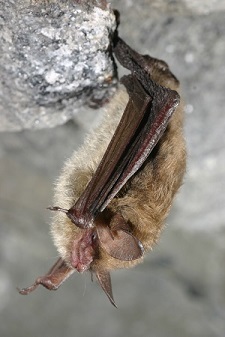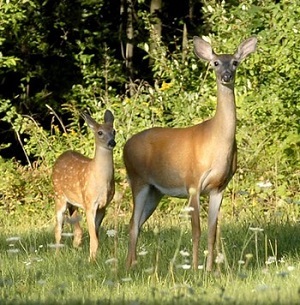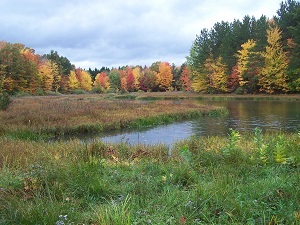Help Protect New York's Bat Populations: Avoid Caves and Mines from October Through April
 DEC is urging outdoor adventurers to avoid caves and mines, which may be home to hibernating bats. Human disturbances are very harmful to the state's bat population since the arrival of the disease known as white-nose syndrome. The disease has killed more than 90 percent of bats at hibernation sites in New York. White-nose syndrome makes bats very sensitive to disturbances. Even a single, seemingly quiet visit can kill bats that would otherwise survive the winter. If you see hibernating bats, assume you are doing harm and leave immediately. DEC is urging outdoor adventurers to avoid caves and mines, which may be home to hibernating bats. Human disturbances are very harmful to the state's bat population since the arrival of the disease known as white-nose syndrome. The disease has killed more than 90 percent of bats at hibernation sites in New York. White-nose syndrome makes bats very sensitive to disturbances. Even a single, seemingly quiet visit can kill bats that would otherwise survive the winter. If you see hibernating bats, assume you are doing harm and leave immediately.
There is currently no treatment for bats suffering from white-nose syndrome. DEC and the NYS Department of Heath are partnering with researchers at several universities across the country to better understand the disease and develop a treatment. They determined that reducing disturbances at hibernation sites during the winter can help the remaining animals survive.
Anyone entering a northern long-eared bat hibernation site from October 1 through April 30, the typical period of hibernation for bats, may be subject to prosecution.
DEC Reminds Motorists to be Alert for Deer During the Rut
 White-tailed deer mating season has begun. Deer are more active and less wary than usual. State Farm Insurance estimates that there are over 70,000 deer-vehicle collisions per year in New York. Most deer-vehicle collisions happen in November, but October and December have the next-highest collision rates. White-tailed deer mating season has begun. Deer are more active and less wary than usual. State Farm Insurance estimates that there are over 70,000 deer-vehicle collisions per year in New York. Most deer-vehicle collisions happen in November, but October and December have the next-highest collision rates.
- Be especially careful at dawn and dusk – these are the riskiest times of day.
- Deer travel in groups, so if you see one or two, look for more coming behind them.
Many problems are caused by deer overabundance, which many urban and suburban areas of New York are experiencing.
Photo by Susan Shafer.
State Lands to Visit: Hanging Bog Wildlife Management Area
 Hanging Bog Wildlife Management Area (WMA) is located in the hills of west central Allegany County. The WMA has diverse habitats, including forest, grasslands, shrublands, ponds and the 45-acre bog the WMA is named for. The WMA supports a variety of recreational opportunities.The most popular activities are hunting and trapping. Common game species include white-tailed deer, black bear, wild turkey, ruffed grouse, gray squirrel, and ring-necked pheasants. Wildlife viewing and birdwatching exist throughout the year, and an accessible wildlife viewing platform is located on the bog, serving as a great spot to see Canada geese, mallard, wood duck, hooded merganser, pied-billed grebe, belted kingfisher, killdeer, green heron, and great blue heron. The area also has a small network of trails for hiking and cross-country skiing. To read more about Hanging Bog WMA, check out the October 2018 issue of the Conservationist (PDF, 1.35 MB). Hanging Bog Wildlife Management Area (WMA) is located in the hills of west central Allegany County. The WMA has diverse habitats, including forest, grasslands, shrublands, ponds and the 45-acre bog the WMA is named for. The WMA supports a variety of recreational opportunities.The most popular activities are hunting and trapping. Common game species include white-tailed deer, black bear, wild turkey, ruffed grouse, gray squirrel, and ring-necked pheasants. Wildlife viewing and birdwatching exist throughout the year, and an accessible wildlife viewing platform is located on the bog, serving as a great spot to see Canada geese, mallard, wood duck, hooded merganser, pied-billed grebe, belted kingfisher, killdeer, green heron, and great blue heron. The area also has a small network of trails for hiking and cross-country skiing. To read more about Hanging Bog WMA, check out the October 2018 issue of the Conservationist (PDF, 1.35 MB).
|


 DEC is urging outdoor adventurers to
DEC is urging outdoor adventurers to 
